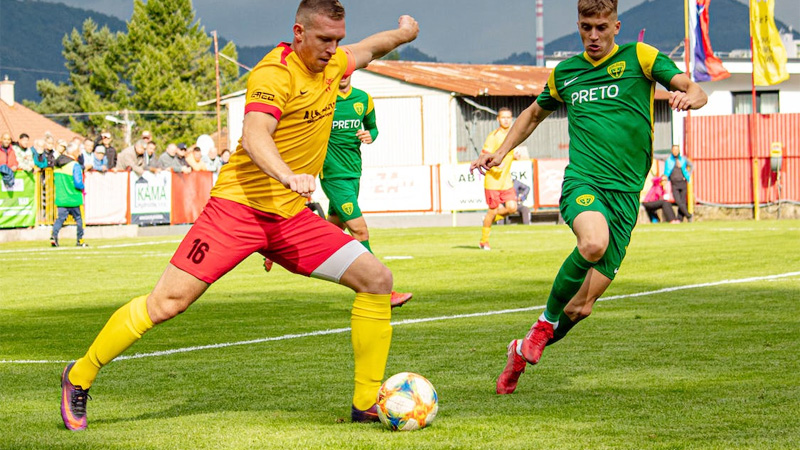Whether you’re a beginner looking to improve your soccer prowess or an experienced player aiming to enhance your performance on the field, a well-rounded training regimen is essential.
Soccer exercises play a pivotal role in honing various aspects of your game, including dribbling, shooting, passing, agility, and overall fitness. In this blog post, we’ve compiled an extensive list of soccer exercises that will help you take your game to the next level.
These exercises are designed to be effective, accessible, and adaptable for players of all ages and skill levels. So, grab your soccer ball and get ready to elevate your skills!
List of the Best 15 Soccer Exercises
The path to soccer excellence demands dedicated training, and a well-rounded list of soccer exercises is essential for players to develop their skills, fitness, and tactical understanding of the game.
1. Cone Dribbling Drills
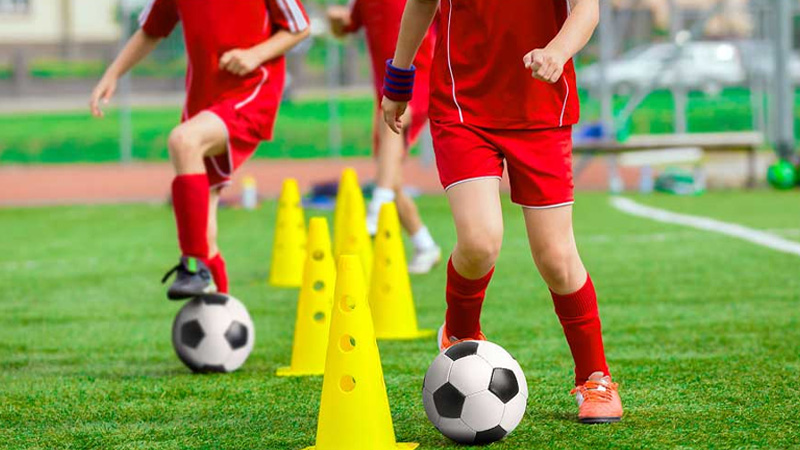
Source: ligadeportiva
Cone dribbling drills are a fundamental exercise for soccer players to improve their ball control, footwork, and dribbling skills.
In this exercise, players set up a series of cones in various patterns and distances, then navigate through them using precise dribbling techniques. The drills can be designed to focus on different aspects, such as quick changes of direction, close ball control, and acceleration.
Cone dribbling drills not only enhance a player’s ability to maneuver the ball effectively in tight spaces but also improve their spatial awareness and decision-making on the field. These drills are versatile and can be adapted to suit players of all skill levels, making them a staple in soccer training sessions.
2. Shooting Drills
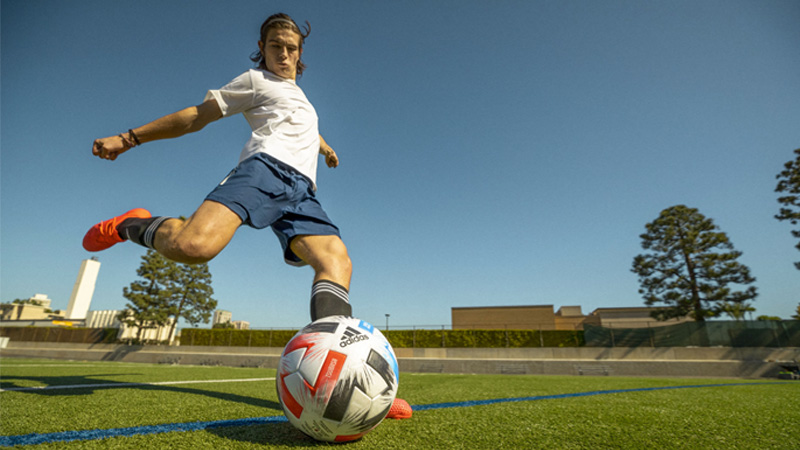
Source: riehepherd
Shooting drills are essential for forwards and attacking players to sharpen their goal-scoring abilities. These drills involve different shooting scenarios, such as shooting from various angles, one-touch finishes, volleys, and long-range strikes.
Players work on their technique, accuracy, and power during shooting drills. Additionally, shooting exercises often include elements of ball control and positioning, helping players become more clinical in front of the goal.
These drills not only benefit attackers but also midfielders and defenders, as the ability to shoot accurately can be a valuable asset for players in any position.
3. Passing Drills
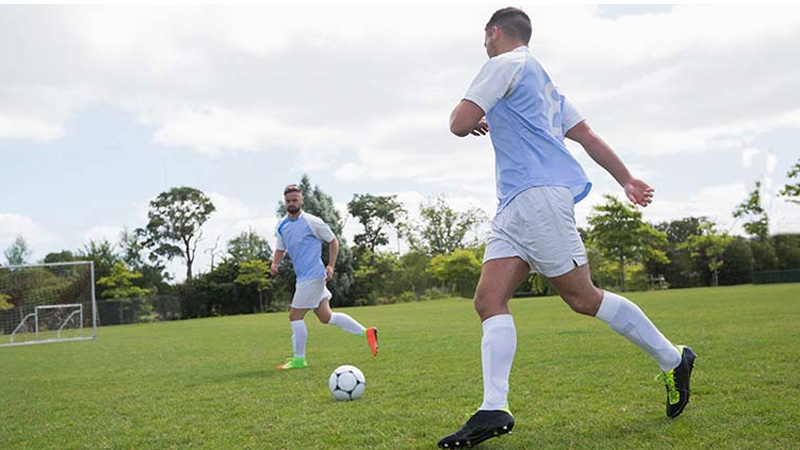
Source: footballtoast
Passing is a fundamental aspect of soccer, and passing drills aim to enhance a player’s ability to deliver accurate and well-weighted passes. These drills focus on different passing techniques, including short passes, long passes, through balls, and chipped passes.
Players practice passing both on the ground and in the air to improve their overall passing range and versatility. Passing drills also emphasize communication and teamwork, as players must coordinate their movements to execute effective passing sequences.
Moreover, passing drills help players develop their vision and awareness on the field, enabling them to spot openings and exploit defensive weaknesses during matches.
4. Agility Ladder Exercises
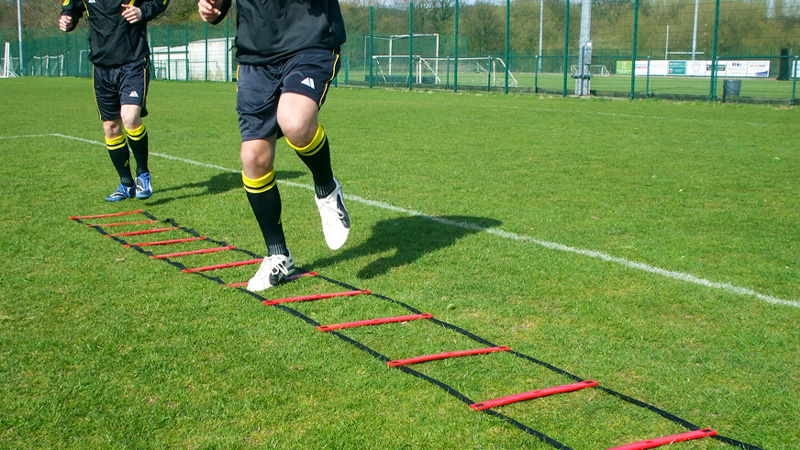
Source: pendlesportswear
Agility ladder exercises are valuable for improving a player’s agility, quickness, and footwork. The agility ladder is a flat ladder-like tool placed on the ground, and players perform a series of footwork patterns by stepping in and out of the ladder’s rungs.
These exercises are excellent for enhancing a player’s ability to change direction rapidly, maintain balance, and improve overall coordination. Agility ladder exercises simulate the dynamic movements often required in soccer, such as dribbling past opponents, evading tackles, and making quick turns.
Regularly incorporating agility ladder exercises into training sessions helps players become more agile and responsive on the field, giving them a competitive edge in match situations.
5. Plyometric Exercises
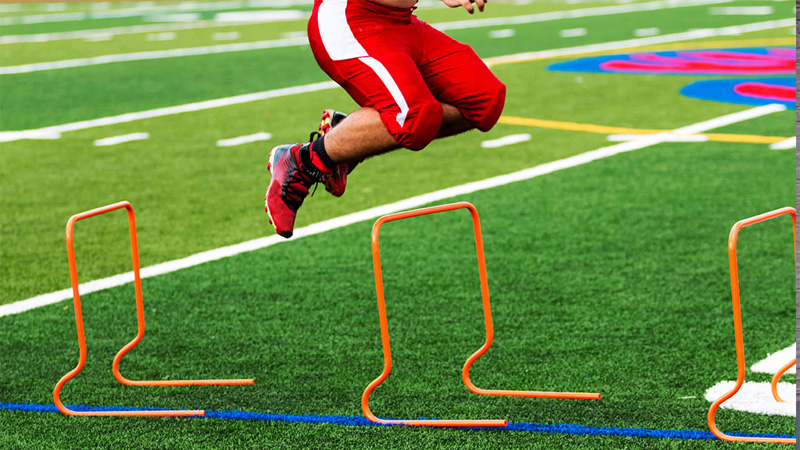
Source: soccertraininglab
Plyometric exercises are a vital component of soccer training, focusing on developing explosive power and enhancing overall athleticism. These exercises involve rapid, high-intensity movements that stretch and contract muscles in quick succession.
Common plyometric exercises for soccer players include box jumps, depth jumps, lateral bounds, and squat jumps.
Plyometrics improve a player’s ability to accelerate, jump higher, change direction swiftly, and handle physical challenges on the field. They also contribute to reducing the risk of injury by enhancing muscle strength and coordination.
6. Wall Passing
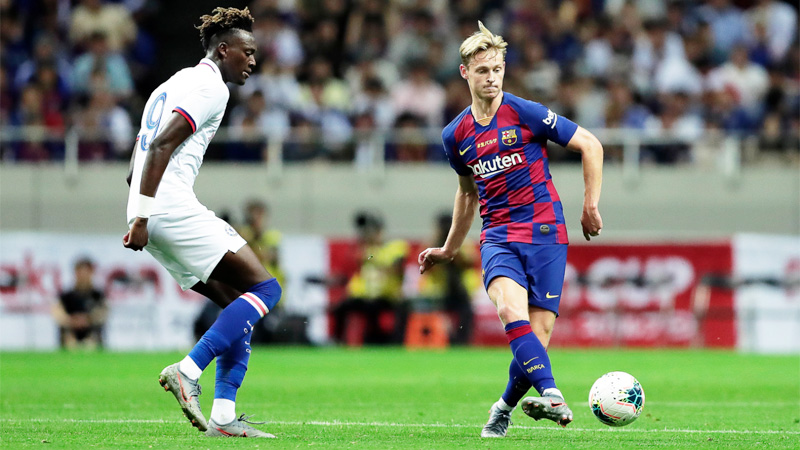
Source: soccer-training-methods
Wall passing drills are a simple yet effective way to improve passing accuracy, ball control, and first touch. This exercise can be performed individually or with a partner.
The player passes the ball against a wall, and as the ball rebounds, they receive it and pass it again. The objective is to maintain a quick and accurate passing rhythm, using both feet and various surfaces of the foot.
This exercise helps players develop a better understanding of ball trajectories and timing, replicating game situations where quick and precise passing is crucial.
7. One-on-One Defending Drills
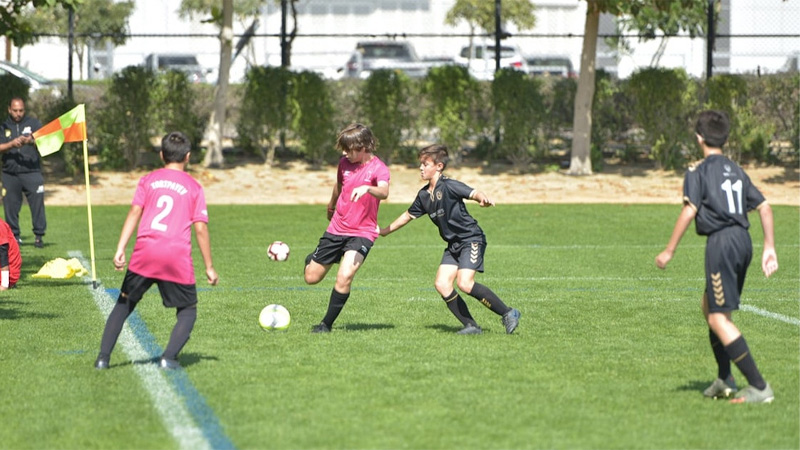
Source: jerseywatch
One-on-one defending drills are essential for developing defensive skills and the ability to win duels against opponents. These drills involve a defender and an attacker facing each other, simulating game-like scenarios.
The defender’s goal is to prevent the attacker from dribbling past them or shooting on goal, while the attacker aims to beat the defender and create scoring opportunities.
One-on-one defending drills improve a player’s positioning, timing of tackles, jockeying, and body positioning to contain the attacker effectively without fouling. These exercises help players gain confidence in their defensive abilities and foster a competitive mindset.
8. Goalkeeper Reflex Training
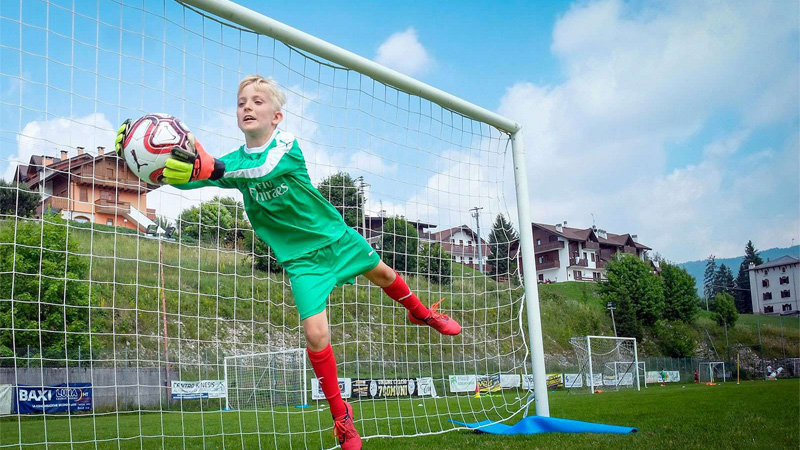
Source: milancamp
Goalkeepers require lightning-fast reflexes to make critical saves during a soccer match. Reflex training involves various drills where the goalkeeper reacts quickly to incoming shots or crosses.
These drills can include reaction saves, point-blank shots, and deflections to challenge the goalkeeper’s reflexes and decision-making under pressure. Training with multiple balls and unpredictable trajectories enhances a goalkeeper’s ability to read the game, anticipate shots, and make split-second decisions.
Goalkeeper reflex training not only sharpens reaction times but also builds mental resilience and confidence, allowing goalkeepers to face high-pressure situations with composure.
9. Interval Running
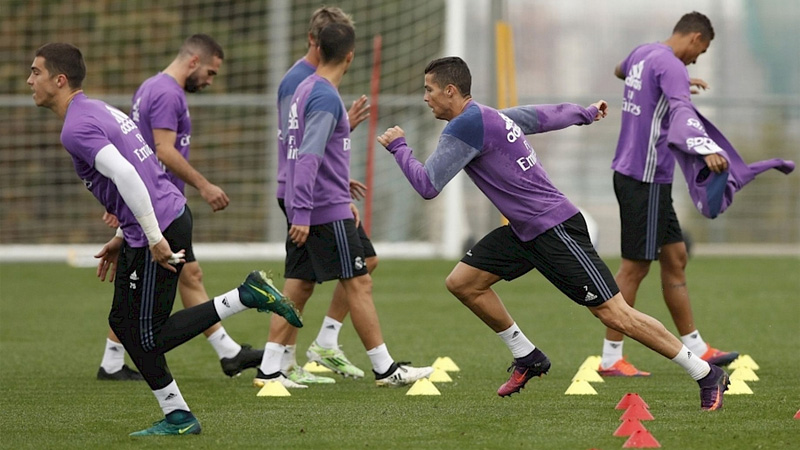
Soccer: fitforfutbol
Interval running is a highly effective soccer exercise aimed at improving a player’s cardiovascular endurance and speed. It involves alternating between high-intensity sprints and moderate-paced jogging or walking for recovery. This exercise closely mimics the demands of soccer, which requires bursts of energy followed by periods of lower intensity to catch a breath.
Players can perform interval running on a soccer field, track, or any open space. It helps build stamina, enhances the body’s ability to recover quickly during a match, and boosts overall fitness levels.
By pushing the limits of their aerobic and anaerobic systems, players can enhance their performance on the field and maintain their competitive edge throughout the game.
10. Heading Practice
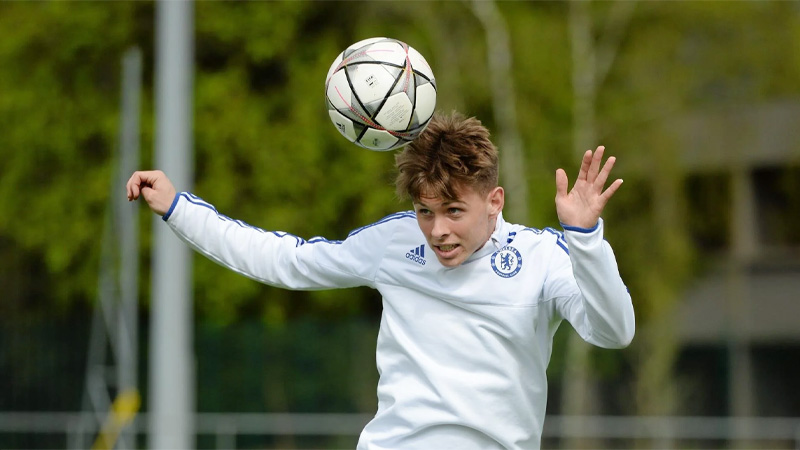
Source: uefa
Heading practice is a crucial soccer exercise to develop a player’s ability to direct the ball accurately using their forehead. This skill is essential for both attacking and defending situations, as players can score goals or clear the ball from dangerous areas.
During heading practice, players work on their timing, positioning, and technique to meet the ball cleanly and direct it with precision. Safety is paramount during these drills, so players are often encouraged to use softer balls during the initial stages to avoid unnecessary risks.
Regular heading practice can improve a player’s confidence in the air, making them a formidable presence during set-pieces and crosses.
11. Overlapping Runs
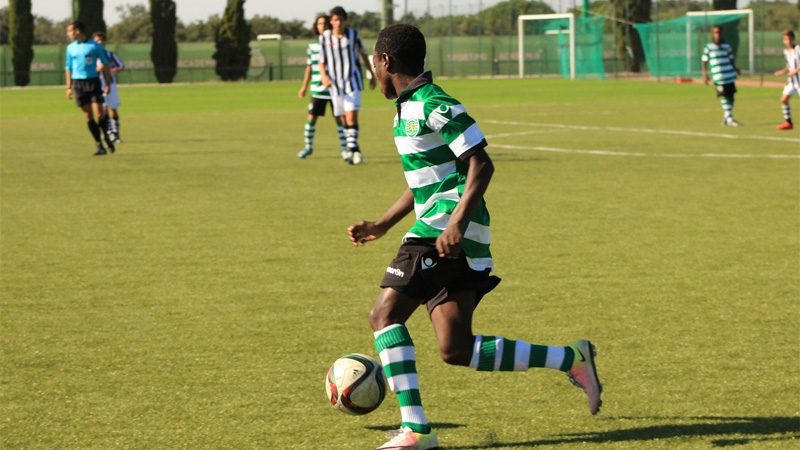
Source: gftskills
Overlapping runs are a tactical exercise that involves coordinated movements between two players, typically a full-back and a winger. The full-back advances forward along the flank, drawing the attention of the opposition’s defenders.
Simultaneously, the winger makes a well-timed diagonal run behind the full-back, receiving the ball in space and gaining an advantageous position near the opponent’s goal. Overlapping runs add dynamism and unpredictability to a team’s attacking play, creating additional passing options and putting pressure on the defensive line.
Mastering overlapping runs requires excellent communication, understanding of each other’s movements, and precise timing to exploit the gaps in the opposing defense.
12. Sprints and Speed Training
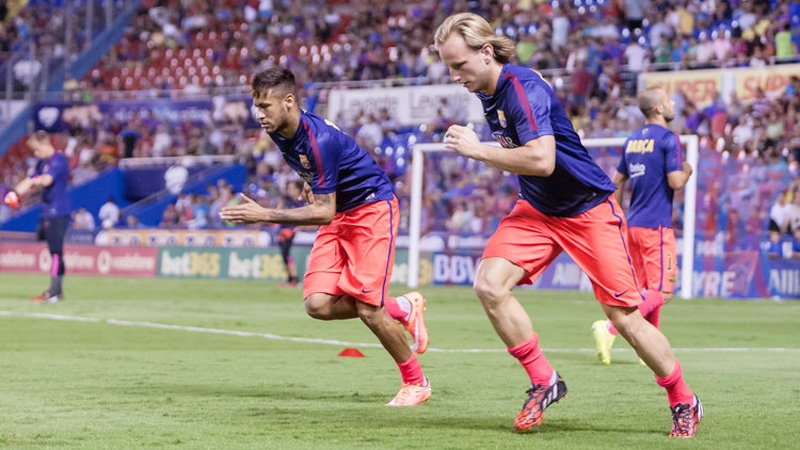
Source: amplifiedsoccerathlete
Sprints and speed training are essential soccer exercises that focus on enhancing a player’s acceleration, top speed, and agility. Players engage in short, explosive bursts of running, simulating game scenarios such as chasing loose balls, making fast breaks, or outpacing opponents.
The training drills include shuttle runs, cone drills, and ladder exercises, which target quick footwork and rapid change of direction. Developing speed is crucial for breaking away from defenders, closing down opponents, and reaching the ball first.
Regular sprints and speed training not only improve a player’s physical attributes but also bolster their mental confidence, knowing they can outpace opponents when needed, making them a valuable asset on the field.
13. Ball Control Drills
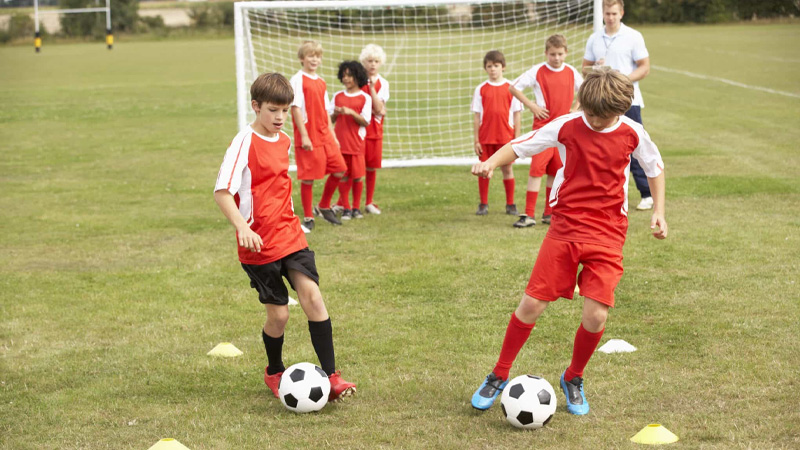
Source: completesoccerguide
Ball control is a fundamental skill in soccer, and mastering it is crucial for players to maintain possession, create opportunities, and execute precise passes and shots. Ball control drills focus on improving a player’s first touch, trapping the ball, and maneuvering it with different parts of their body, such as feet, thighs, and chest.
These exercises often involve repetitive movements with a focus on accuracy, quick reflexes, and soft touches. They can be performed individually or in groups, with varying levels of difficulty to challenge players of all skill levels.
Practicing ball control drills regularly not only enhances a player’s technical ability but also boosts their confidence in handling the ball under pressure during real-game situations.
14. Small-Sided Games
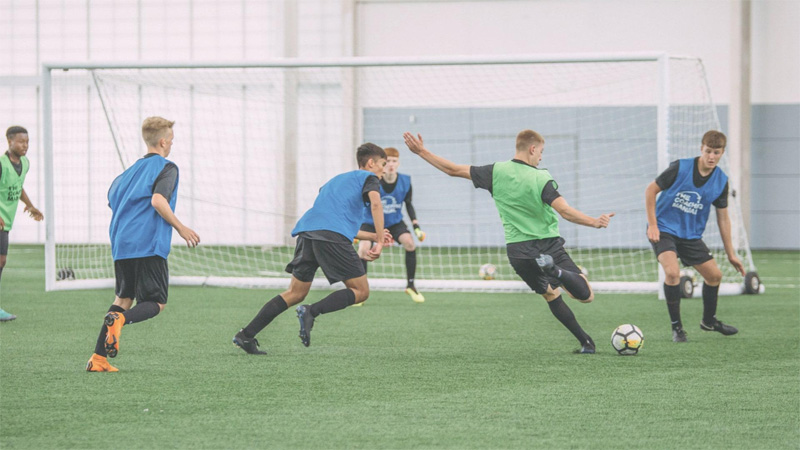
Source: thecoachingmanual
Small-sided games, also known as mini-games or small-sided scrimmages, are an essential component of soccer training. These games are played on a smaller field with fewer players, typically 3v3, 4v4, or 5v5.
The reduced space and player numbers increase the frequency of touches on the ball, forcing players to think and act quickly. Small-sided games promote teamwork, decision-making, communication, and adaptability. They encourage players to apply various skills they’ve learned, such as passing, shooting, and dribbling, in a game-like environment.
Moreover, the smaller teams create more opportunities for players to be involved in both offensive and defensive actions, fostering an all-rounded understanding of the game.
15. Shuttle Runs
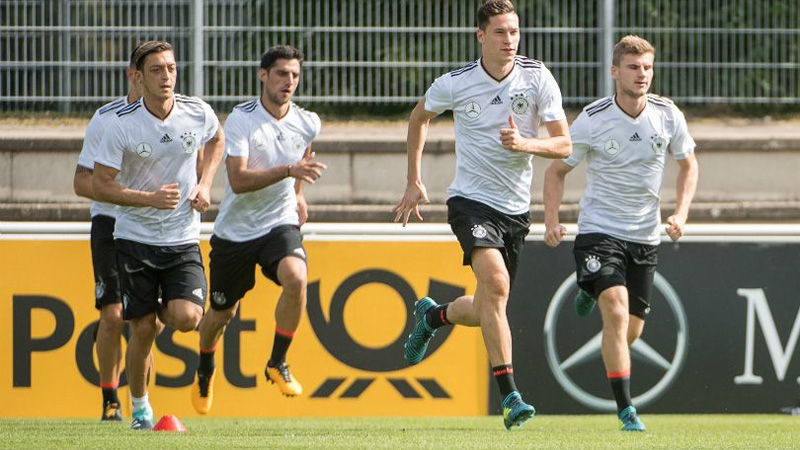
Source: fourfourtwo
Shuttle runs, also known as “suicides” or “shuttles,” are conditioning exercises that focus on improving a player’s speed, agility, and endurance. In a shuttle run drill, players start at a designated point, sprint to a marker further away, touch the ground or cone, and then quickly change direction to return to the starting point.
They repeat this process for multiple rounds, increasing the distance or intensity as they progress. Shuttle runs simulate the stop-and-start movements that occur frequently during a soccer match, helping players develop their explosiveness and stamina.
These drills are an integral part of soccer training, as they not only improve physical fitness but also mental toughness, teaching players to push themselves beyond their limits during challenging moments in a game.
FAQs
What are soccer exercises, and why are they important?
Soccer exercises are specific drills and activities designed to target different aspects of soccer skills and physical attributes. These exercises are crucial for player development as they help improve techniques, build strength, enhance agility, and boost overall fitness levels.
Regular practice of soccer exercises can significantly contribute to a player’s growth and on-field performance.
Can beginners perform these exercises?
Absolutely! While some exercises may be more challenging than others, the list we’ve compiled includes exercises suitable for beginners. It’s important to start at your comfort level and gradually progress as you build confidence and skill. Remember, consistent practice and determination are key to improvement.
How can soccer exercises improve my game?
Soccer exercises are designed to target specific skills and attributes required for success on the field. Dribbling exercises enhance ball control, shooting drills improve accuracy and power, passing exercises refine distribution, and agility training sharpens quick movements and changes of direction.
By incorporating a variety of soccer exercises into your training routine, you’ll develop a well-rounded skill set that translates into improved performance during actual matches.
Do I need any special equipment to perform these exercises?
While some exercises may require basic equipment like cones, hurdles, or agility ladders, many can be performed with just a soccer ball and enough space to move around.
We’ve included a mix of exercises to cater to different training environments and equipment availability, making it accessible for players to practice both on the field and at home.
How often should I do these soccer exercises?
The frequency of performing soccer exercises depends on your training schedule and overall fitness level. Ideally, incorporating these exercises into your training routine 2-3 times per week can yield noticeable improvements.
However, listen to your body and avoid overtraining to prevent injuries. Remember to combine these exercises with rest and recovery to maximize their benefits.
Wrapping Up
Becoming a skilled soccer player requires dedication, practice, and the right training approach. This comprehensive list of soccer exercises provides you with a valuable resource to enhance various facets of your game.
Whether you’re looking to finesse your dribbling, refine your shooting, or boost your agility, consistent practice of these exercises will undoubtedly elevate your skills on the soccer field.
So, take advantage of this resource, stay motivated, and watch as your game reaches new heights with every passing session. Get out there, work hard, and enjoy the beautiful game of soccer!

